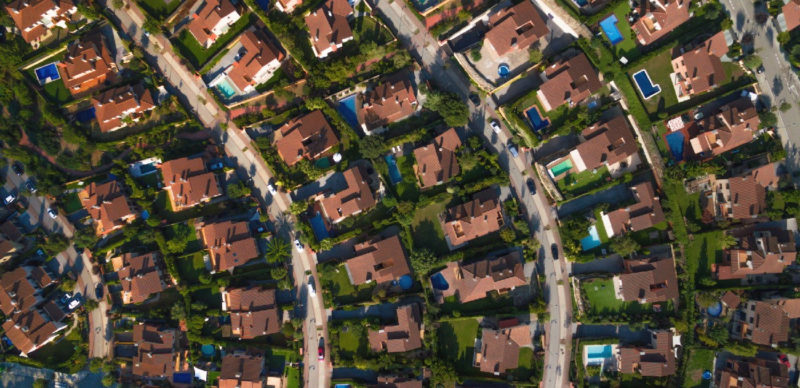Some people call it buying the worst house in the best neighborhood, but most nice neighborhoods work just fine – especially when houses to choose from are scarce. But either way, this equity-building strategy isn’t for the faint of heart.
Back Door Entry to a Ritzy Area
The theory is that lower-priced homes in upscale neighborhoods will appreciate at a higher percentage than all the other houses in the neighborhood. It’s a chance to build a lot of equity fast when you purchase a $325,000 home in a neighborhood of $425,000 homes without multiple other buyers attempting to outbid you. Let’s assume going forward that house in the neighborhood will appreciate at 7% each year for the next two years. Compounding the typical $425,000 house over two years means the values rise to $486,691.
Buying the $325,000 house is like a back door entry to a ritzy area. It comes with neighborhood amenities like an HOA with a clubhouse, swimming pool, tennis courts, and/or golf course. It can also be a way to get into a better school district at a price you can afford. The intended result of buying the worst house in a nice neighborhood is that all the neighborhood amenities and prestige increase the percentage rate of appreciation for the out-of-place, lower-value house. All the extras cause the $325,000 house to appreciate at 12% instead of 7% per year for the next two years. The bottom line is that while the $425,000 houses gain $61,691 in value, the smaller investment of $325,000 gains $82,680 in value. A nice little investment trick when it works.
Sounds too good to be true. It could be because buying the worst house does involve both risk and the cost to bring it back up to neighborhood standards. If the house needs major rehab, you could easily spend all the anticipated increases in value making repairs and upgrades. You would end up in a nice neighborhood with a home valued on par with all the others, but you would not have made much financial gain (if any). It would be a push.
But a major rehab isn’t always the case…
What You Might Do
A different version of this strategy is buying the smallest house in a neighborhood of large houses. Say a 1,800 square foot house with few amenities in a neighborhood of 3,200 square foot houses with plenty of amenities. Something like an older house in decent shape that got swallowed up when a new development was built around it. That can be a great back door entry to a ritzy area with good schools and more amenities than a neighborhood of all 1,800 square foot homes. It could be your entry into a $425,000 neighborhood for $325,000. But you shouldn’t plan to make a 1,200 square foot addition or all of your savings will go into the new construction.
Another version could be a slightly run-down house in a genuinely nice, old money area. For simplicity, we’ll use the same $425,000 and $325,000 numbers. The difference here is that it is an older couple and one of them is quite ill. Not trying to be morbid but that is life. The exterior hasn’t been painted in 15 or 20 years and the interior has peeling wallpaper from 3 decades ago. The older couple has a lifetime collection of belongings that only have value to them – a form of hoarding. The old guy has spent a lifetime smoking a pipe in the house.
Just be sure that you look at it for what it is. A home in a moderate stage of disrepair, but you love the neighborhood, and the house has a certain charm. Up and down the street, all the other houses are well maintained with manicured lawns. You make a lowball offer with an explanation of everything you’ll need to do to make it attractive to your young family that you’d love to raise in this neighborhood. You suggest that they take everything they want from the house, and you’ll decide on everything they leave behind.
Today’s market is changing. Most of today’s buyers still want a turnkey house with fresh paint and shiny new appliances. But that’s not what the aging baby boomer generation has for sale. The low-ball offer might be coming back.
What they might see is a $325,000 sales price for a house they bought 35 years ago for $95,000 or $110,000. Yes, that is what many nice houses in nice neighborhoods sold 35 years ago. The old couple with a dwindling nest egg for retirement but a fully paid house has a chance to put the entire $325,000 into the bank without having to spruce up the old house. That could be a very tempting offer in the near-term housing market. A win-win for both the buyer and seller when you get a home that you couldn’t even dream about over the past couple of years.
Source: realtybiznews.com













